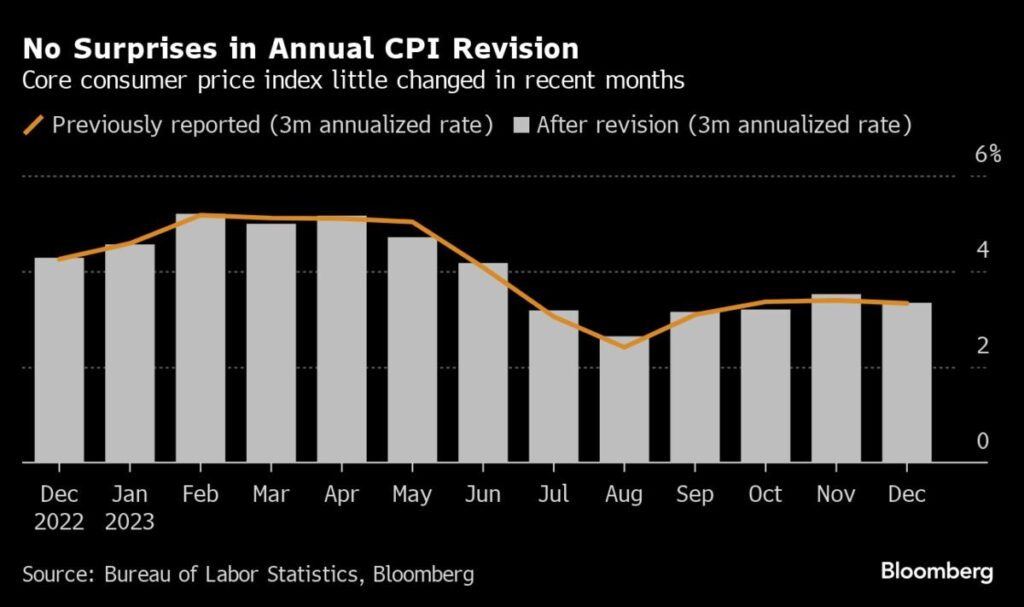US inflation was about the same at the end of last year as initially reported after incorporating annual revisions, according to new data published Friday.
Consumer prices excluding food and energy items rose at a 3.3% annualized rate in the final three months of 2023, matching the previous reading, Bureau of Labor Statistics data showed. Revisions to the headline figure were also minimal, though December’s monthly increase was marked down to a 0.2% advance instead of 0.3%.

The uneventful revisions will come as a relief for Federal Reserve Chair Jerome Powell and his colleagues who are seeking more evidence that price pressures are sustainably receding before they begin cutting interest rates. Inflation moderated swiftly in the second half of last year, and policymakers have expressed doubts as to whether such rapid progress can be sustained.
“Today’s data primarily serves to solidify the market’s perception that Powell has made significant progress on inflation and therefore rate cuts will be in the offing, if not in March, then May or June,” Ian Lyngen, head of US rates strategy at BMO Capital Markets, said in a note.
Stock futures rallied and Treasuries fluctuated after the release.
This year’s adjustments have been subject to an unusual amount of anticipation after last year’s update caught policymakers and investors off guard. At the time, inflation had been on a solid downward trajectory, and some of that progress was subsequently revised away.
Read More: Risk of Big US CPI Revision Puts Policymakers, Investors on Edge
January figures due Tuesday are expected to show the so-called core index advanced 0.3% for a third straight month, representing a slight pickup on a three-month annualized basis.
What Bloomberg Economics Says…
“The updates, which largely matched our expectations, confirm the disinflation progress over the past year. More importantly, they show stronger disinflationary momentum in core services, the category the Fed worries most about. As a result, the core PCE deflator – the Fed’s preferred inflation gauge, which assigns a much larger weight to core services – will likely show slightly stronger disinflation toward end-2023 than originally realized.”
— Anna Wong and Estelle Ou, economists
The BLS regularly adjusts monthly CPI data to remove seasonal factors that affect the numbers, such as model changeovers and holiday shopping. At the start of each year, the agency reevaluates those factors to keep up with the latest trends, hence the annual revisions.
